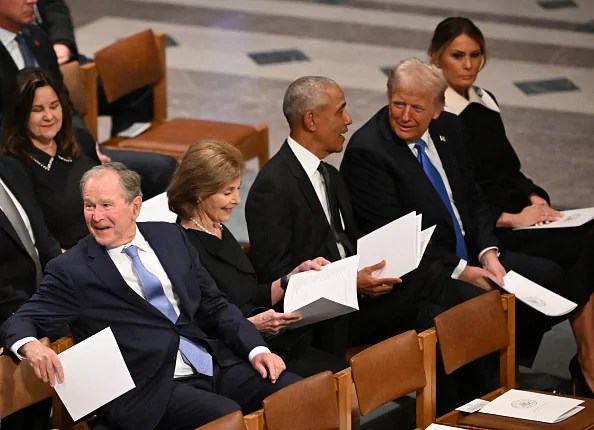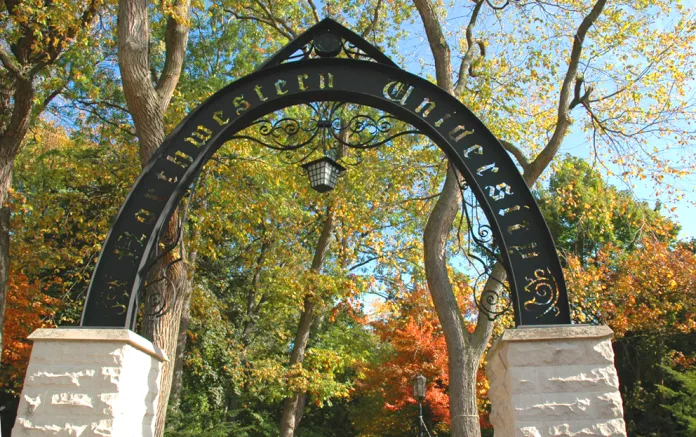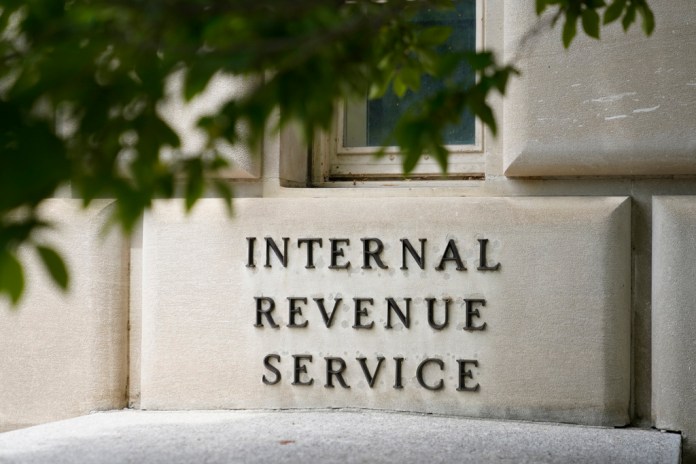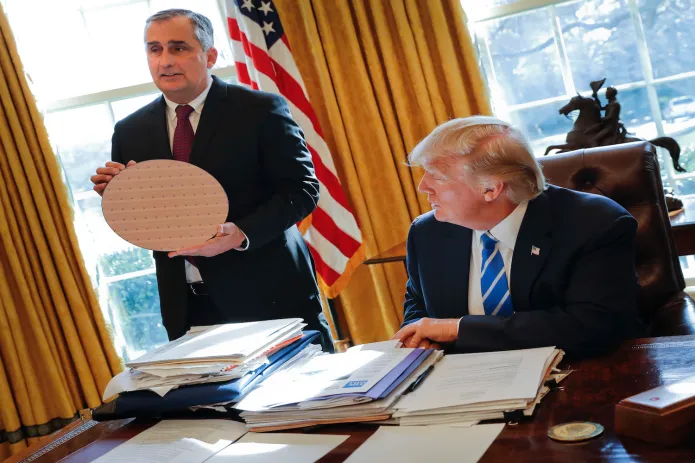Former President Barack Obama’s use of executive power and pursuit of policy changes without the constraints of Congress helped set the table for what Democrats now describe as the “authoritarian” ethos of the second Trump administration. From using the Justice Department to achieve partisan goals to advancing his immigration agenda via executive actions, Obama set the precedent for expanding executive authority that Trump is now relying on to test the limits of Article II. Part 2 of this Washington Examiner series, “The House That Obama Built,” will examine the Obama administration’s precedent of using the federal government to pressure states and private institutions.
Critics of the Trump administration have spilled considerable ink decrying what they characterize as an unprecedented use of federal power to coerce private institutions and Democratic states into compliance with the president’s agenda. What often goes unsaid, however, is that much of President Donald Trump’s playbook has precedent in actions taken by the Obama administration.
Threatening to revoke funding from universities lest they bend to ideological demands, rewarding politically connected interests, cutting checks to politically aligned nonprofit groups, and using the IRS to attack partisan enemies are tactics that found homes in both the Obama and Trump administrations.

OBAMA’S DOJ LAID THE GROUNDWORK FOR THE POLITICIZATION DEMOCRATS NOW DECRY
Former President Barack Obama has recently returned to the political scene, serving as a fixture at Democratic campaign events and frequently criticizing the Trump administration. The former president, for instance, has accused the current president of creating a political environment “consistent with autocracies.”
Obama, much like Trump, did not shy away from using the tools available to him as president to pressure Americans into complying with his vision for the nation. Under Obama, federal funds were used to influence law enforcement, nondiscrimination, healthcare, and education policy at the state and local level across the country.
Wielding Title IX
Not least among Obama’s efforts to reshape American society using the federal government was his administration’s reinterpretation of Title IX to reshape how educational institutions receiving federal funding approached questions of gender identity and sexual harassment.
Practically, the Obama administration’s reforms related to gender identity — enacted between 2010 and 2016 through the Department of Education — required publicly funded schools to use the preferred names and pronouns of transgender students, make sex-segregated spaces such as bathrooms and dormitories open to transgender students in alignment with their gender identity, and avoid disclosing the gender status of students without their consent.
Failure to comply with these terms meant risking the loss of federal funding, as compliance with Title IX is a prerequisite for such support.
2011 brought further Title IX reforms when the Obama administration issued a letter requiring universities to thoroughly investigate and sanction any unwanted conduct of a sexual nature, including speech. The reinterpretation concerned free speech activists, such as those at the Foundation for Individual Rights and Expression, who claimed the tweaks would force universities to “investigate harassment claims even when a reasonable person would not have found the speech objectionable, thereby weaponizing the sensitivities of the least speech-tolerant students of campus.”
Beyond mere speculation, Northwestern University professor Laura Kipnis faced a university-led Title IX investigation in 2015 for authoring an essay defending a colleague who had been accused of violating Title IX. A number of other students and professors faced similar restrictions on expression during the Obama administration.

The actions taken under the Obama administration to shift internal policies at universities bear a striking resemblance to moves made by the Trump administration to quash diversity, equity, and inclusion as well as anti-Israel rhetoric in higher education. Trump, however, has been more direct than Obama at times.
In the opening months of his second term, Trump canceled billions of dollars in funding to prestigious universities such as Harvard University, Columbia University, and the University of California, Los Angeles, over their alleged failures to address antisemitism on campus following last summer’s wave of pro-Palestinian protests.
Some, like Columbia, cut deals with the Trump administration to restore funding, whereas others, such as Harvard, have successfully sued the federal government over the cuts.
Even the criticism faced by the Trump administration sounds like a throwback to the Obama era.
Yale’s chapter of the American Association of University Professors characterized Trump’s approach to higher education as financial “blackmail.” This mirrors language used by Republican critics of Obama’s Title IX reforms, such as Texas Lt. Gov. Dan Patrick, who declared “we will not be blackmailed” in response to the president’s expansion of civil rights law to cover transgender individuals.
Carrots and sticks from Obama and Trump
Putting aside the stick, Trump has also trotted out the carrot to bring universities into line with his vision.
In October, the White House offered all institutions of higher education preferential access to federal grants in exchange for accepting a list of 10 policy changes.
Among these were prohibiting discrimination based on immutable characteristics or political beliefs in admissions, the use of standardized test scores in admissions, addressing alleged anti-conservative “institutional units,” prohibiting support of terrorist organizations or incitements to violence, nondiscrimination in hiring, institutional neutrality on questions of politics, cracking down on grade inflation, the establishment of single-sex spaces based on biological sex, reducing the proportion of foreign students, free tuition for students studying the hard sciences at universities with an endowment exceeding $2 million per undergraduate student, and the disclosure of all foreign funding.
Obama was no stranger to offering up financial incentives to shape education, either.
The Obama administration’s flagship Race to the Top program offered $4.35 billion in competitive grants to incentivize state and local reforms to K-12 schooling. Some argued the funds incentivized the adoption of the Obama administration’s Common Core State Standards. While some states did adopt Common Core to receive grant funding, the actual program did not require doing so, as it merely encouraged adopting some form of consistent educational standards.
Race to the Top also sought to increase emphasis on science and mathematics, support high-performing charter schools, and encourage schools to implement performance-based compensation for teachers and administrators, among other things.
Despite its lofty goals, critics — including those on the Left — argued that states participating in the program overpromised to get funding and subsequently underdelivered on their promises. The Obama administration at the time, however, tried to rebut such claims by stating that benefits derived from the program were not easily measurable.

Beyond using federal funds as leverage for policy concessions, which many admit is business as usual in Washington, critics have accused Trump of being uniquely authoritarian for his plans to investigate left-wing nonprofit groups following the assassination of Charlie Kirk. In the telling of White House Deputy chief of staff Stephen Miller, the administration is poised to crack down on nonprofit organizations that use their resources to organize riots, street violence, doxing operations, or messaging campaigns designed to incite violence.
The Ford Foundation, one of the philanthropies explicitly targeted by the administration, has funded protests and other activities that have at times turned violent.
Liberal nonprofit groups have broadly denied links to such activities, with a coalition of over 100 left-of-center organizations penning an open letter in September accusing the president of working to “undermine our democracy” through his investigations.
Conservatives levied similar criticisms against Obama in 2013 after an IRS official admitted the agency had been aggressively scrutinizing organizations whose names included words such as “Tea Party” or “patriots,” which was widely viewed as an attack on conservatives. Liberal groups were also targeted, albeit in much smaller numbers.
The IRS ultimately apologized to the conservative organizations and entered into financial settlements with hundreds of them for restitution.
Private markets, public criticism
Similarities between the tactics of the Obama and Trump administrations extend beyond their affinity for ideological crusades. Both share the distinction of being accused by critics of engaging in federal overreach to the detriment of private markets.
The federal government under Trump, for instance, has taken stakes in Intel, rare earth producer MP Materials, Lithium Americas, Trilogy Metals, and US Steel Corporation. Some media outlets have described these moves as “unusual.”

Obama, however, did something similar in the fallout of the 2008 financial crisis. As part of the 2009 auto bailout, the federal government took a 60.8% stake in General Motors in exchange for $49.5 billion in bailout funds. The Obama administration sold its stake in 2013, ultimately losing taxpayers over $10 billion. The federal government also took a smaller stake in Chrysler during the bailout, which it also sold at a loss.
Additionally, the United Auto Workers — a significant financial backer of Obama and the Democratic Party — walked away from the bailout deal with very favorable terms. Despite their employers being forced to declare bankruptcy, the terms of the bailout made it impossible to cut union members’ pay. A 2012 Heritage Foundation report argued that the taxpayers’ losses on the bailout were largely spurred by automakers being forced to pay “uncompetitive” wages to unionized workers.
Obama’s political allies, the UAW among them, made out well during his tenure.
Solyndra, an ill-fated solar power company whose primary backers secured large sums for Obama’s campaign account, received a fast-tracked $500 million loan guarantee from his administration in 2009. The firm failed just two years later, defaulting on the loan. Left-wing nonprofit groups also raked in large sums in federal grants and contracts.
On the nonprofit side of things, New Venture Fund, which is an arm of a Democratic-aligned dark money network managed by Arabella Advisors, pulled in $1.2 million during Obama’s time in office. The New America Foundation, meanwhile, received $4 million from the Obama administration. Obama’s State Department even approved a grant to the foundation after Anne-Marie Slaughter, an alumnus of the Obama State Department, took over as its CEO.
Alumni of New America worried at the time that funding from the Obama administration could undercut the think tank’s independence.
Other left-of-center nonprofit groups, including the Center for American Progress, the Clinton Foundation, the Roosevelt Institute, and the Economic Policy Institute, also received grants from the Obama administration. Trump, meanwhile, faced criticism for canceling grants to left-of-center nonprofit organizations that his White House deemed “frivolous.”
One area where Trump’s actions do not have a precedent in Obama’s is his large-scale deployment of National Guard units to cities he believes are doing a poor job of addressing crime. While Obama avoided similar deployments, he did attempt to shape local public safety policies through grant-based incentives and Department of Justice compacts with municipal law enforcement agencies.
Trump and Obama did, however, both deploy the National Guard to the southern border.
Obama was relentless in ensuring orders from Washington were implemented in the heartland, particularly as it related to his healthcare agenda. His administration, for instance, threatened to withhold Medicaid funding from states that refused to expand Obamacare, with Florida being the most notable example.
GOP DONORS COULD WIN BILLIONS AFTER TRUMP DISMANTLED KEY PUERTO RICO OVERSIGHT BOARD
In a more emotionally charged episode, the Little Sisters of the Poor, a Catholic religious society that cares for the elderly and downtrodden, filed a complaint in 2013 arguing that the Affordable Care Act’s contraceptive mandate violated their religious beliefs. The nuns argued that requiring them to cover the insurance costs of birth control violated their religious freedom.
The Obama administration successfully imposed its requirement in 2015 after the 10th Circuit Court of Appeals ruled in its favor.
